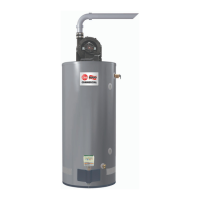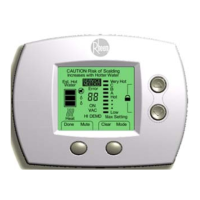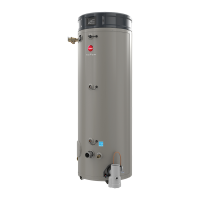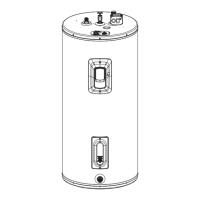Guardian PowerVent Training Manual SVC900; Rev 1
Page 22
HOW TO CHECK THE VACUUM SWITCH
At beginning of a call for heat, the vacuum switch is OPEN. If the blower motor is not working,
then check:
1. Vacuum switch tubing is not kinked and connected.
2. Vacuum switch is connected with two red and black wires.
3. Vent over-temperature switch is not activated.
4. The control insures that the vacuum switch is open before it turns on the blower. If the
control cannot force the switch to open by cycling the blower, it will indicate this failure.
After 5 cycles (attempts), the control will lockout. LED Indicator will flash 3/1 times.
Replace vacuum switch.
5. Next, the control insures that the vacuum switch is closed
before it turns on the pilot and main burner. If the control
cannot force the switch to close by cycling the blower, it
will indicate this failure. After 5 cycles (attempts), the
control will lockout. LED Indicator will flash 3/3 times.
6. Check venting for obstructions, then…..
Figure 6 – Vacuum Switch
Assuming the blower motor is running –
1. Verify 120VAC at the red wire to the bottom of the vacuum safety switch. (There should
always be 120VAC at this wire, even when the unit is in stand-by mode.)
2. Measure 120VAC at the blue wire on the vacuum safety switch.
3. If there is no power at the blue wire, then verify blower motor draft of 0.75 inches w.c.
with a magnahelic gauge. Replace vacuum safety switch if there is at least .75 inches w.c.
Otherwise, replace the blower motor.
HOW TO CHECK THE THERMISTOR (TEMPERATURE SENSOR)
The temperature sensing mechanism is electronic; not mechanical. The thermistor is nothing
more than a resistor installed in the temperature sensing bulb of the control valve. As the water
temperature cools, the thermistor will increase its resistance value (in thousands of OHMS). The
control module knows that a specific resistance value is equal to a specific water temperature.
Eventually, the resistance value gets so high that is causes the electronic control module to
demand heat and start a cycle. As the water is heated, the resistance value in the thermistor
drops. The resistance value is based on temperature; so when the water gets to the proper
temperature (a known resistance value), the control module ends the demand for heat.
Eventually, the resistance value gets so high that is causes the electronic control module to
demand heat and start a cycle. As the water is heated, the resistance value in the thermistor
drops. The resistance value is based on temperature; so when the water gets to the proper
temperature (a know resistance value), the control module ends the demand for heat.
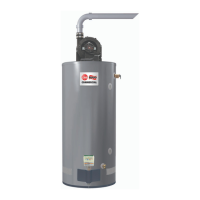
